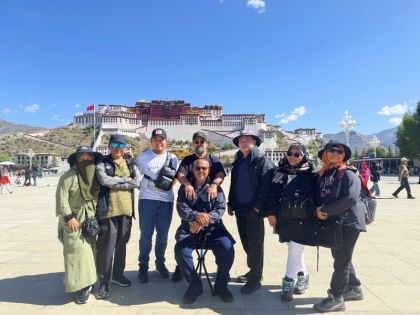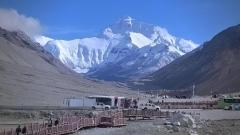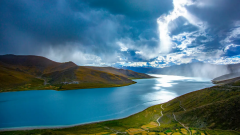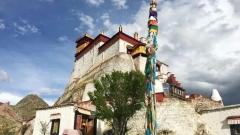Tibet—land of snow peaks, ancient monasteries, and spiritual wonder—is a dream destination for many travelers. But due to its high altitude and remote location, a common question arises: “Is it safe to travel to Tibet?”
The short answer: Yes, it’s safe for most travelers when you’re well-prepared and informed. Here are 10 must-know safety tips to help you plan a secure and enjoyable journey to the Roof of the World.
1. Be Prepared for High Altitude
Tibet’s average altitude ranges from 3,000 to 5,000 meters (9,800 to 16,400 feet). Some travelers may experience Acute Mountain Sickness (AMS), especially during the first 2–3 days.
How to handle it:
-
Spend your first few days in Lhasa (3,650m) to acclimatize
-
Avoid strenuous activity during the first 48 hours
-
Drink lots of water and avoid alcohol
-
Consider Diamox after consulting your doctor
-
Travel with oxygen canisters if you’re sensitive to altitude
2. Travel with a Registered Tour Operator
Foreign travelers cannot enter Tibet independently. You must book a tour through a licensed local agency that arranges:
-
The Tibet Travel Permit
-
Transportation and accommodation
-
Professional Tibetan tour guides
A trusted operator ensures your trip follows the latest safety protocols and government policies. This is essential not just for convenience, but also for emergency support, especially in remote areas.

8-Day Classic Tibet Tour: Lhasa, Everest, Namtso & More $ 965
3. Respect Local Laws and Regulations
Tibet is an autonomous region with specific regulations. Always carry your permits and passport with you. Some areas—like Mount Kailash, Nyingchi, or border zones—may require additional permits or escorts.
Avoid:
-
Political discussions or protests
-
Photographing military personnel or sensitive sites
-
Entering restricted areas without permission
Your guide will keep you informed—always follow their advice.
4. Keep Emergency Contacts Handy
While Tibet is generally safe from crime, it’s important to be prepared for emergencies like altitude sickness or unexpected weather changes.
Useful emergency contacts:
-
Local guide’s phone number
-
Your tour agency’s 24/7 hotline
-
Local hospital info in Lhasa, Shigatse, and Tsedang
You can also register your trip with your embassy before traveling.
5. Choose Safe and Comfortable Transport
Road conditions in Tibet are improving, but long drives through mountainous terrain can still be rough. It’s best to:
-
Use tour vehicles with experienced local drivers
-
Avoid traveling at night on rural roads
-
Wear a seatbelt and pack motion sickness medicine if needed
Most flights into Tibet (especially from Chengdu, Xining, or Kathmandu) are reliable, but weather delays can occur—always build buffer time into your schedule.
6. Pack Smart for Safety
Weather in Tibet changes quickly, especially in high-altitude areas. Pack for:
-
Layered clothing (days are sunny, nights are cold)
-
Sun protection: sunglasses, SPF 30+, lip balm
-
Comfortable shoes with good grip
-
Basic medicine kit (altitude meds, headache relief, digestive aids)
In winter (Nov–Feb), temperatures can drop below -10°C (14°F), so pack thermal wear and gloves.
7. Stay Hydrated and Eat Carefully
Dehydration is a common issue at altitude. Always carry bottled water, and drink even if you don’t feel thirsty.
Food safety in Tibet is generally good, especially in Lhasa and major towns. But:
-
Eat in reputable restaurants
-
Avoid raw or undercooked food in remote regions
-
Carry snacks and electrolytes during long road trips
8. Avoid Overexertion
Even experienced hikers can feel fatigued in Tibet’s thin air. Listen to your body, and:
-
Take breaks often, especially on treks like Everest Base Camp
-
Avoid climbing stairs or walking uphill too fast
-
Inform your guide if you feel dizzy, nauseous, or breathless
If symptoms persist or worsen, descend to a lower altitude immediately.
9. Stay Updated with Travel Restrictions
Tibet’s political and natural environment can change. At times, the region may be temporarily closed to foreign visitors, especially:
-
During sensitive anniversaries (March)
-
During natural events like landslides or heavy snow
Your tour operator will keep you informed and offer alternatives. It’s a good idea to have flexible travel dates and comprehensive travel insurance.
10. Travel with Respect and Awareness
Tibetans are deeply spiritual people, and cultural etiquette matters:
-
Always walk clockwise around religious sites
-
Ask before taking photos of people or monks
-
Don’t touch prayer flags or religious objects without permission
Respecting local customs enhances your experience and helps you travel more safely—as a welcomed guest, not just a tourist.
Conclusion: Is It Safe to Travel to Tibet?
Yes—Tibet is generally safe for international travelers who prepare well and travel with a licensed tour operator.
To enjoy a smooth trip, follow altitude safety tips, respect local customs, and ensure all permits are arranged in advance.
At China Dragon Travel, we offer safe, legal, and hassle-free Tibet tours with professional guides and 24/7 support. We handle everything from permits to accommodations—so you can focus on the experience.
Travel smart, travel safe—with China Dragon Travel.












